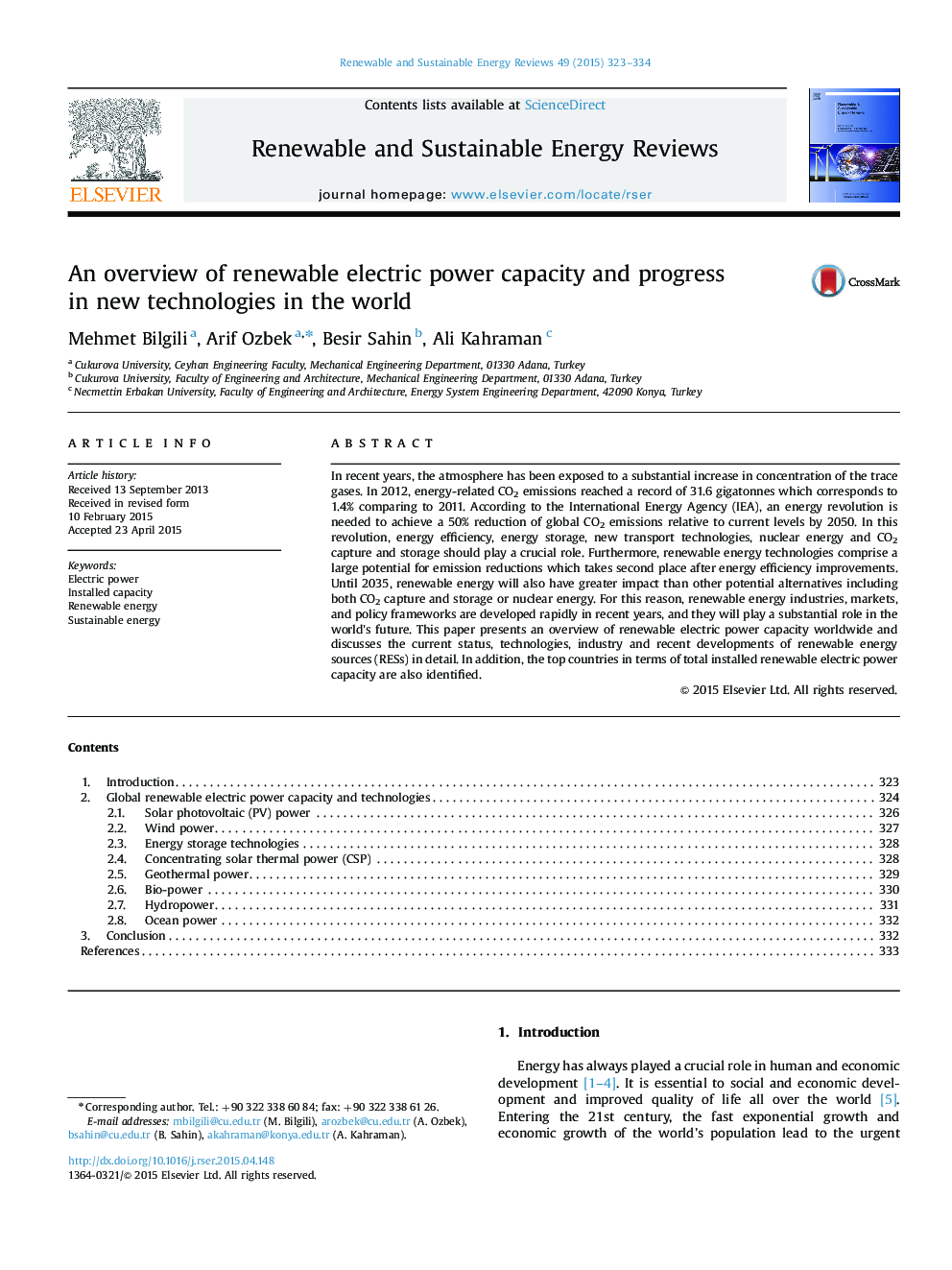| Article ID | Journal | Published Year | Pages | File Type |
|---|---|---|---|---|
| 8116482 | Renewable and Sustainable Energy Reviews | 2015 | 12 Pages |
Abstract
In recent years, the atmosphere has been exposed to a substantial increase in concentration of the trace gases. In 2012, energy-related CO2 emissions reached a record of 31.6 gigatonnes which corresponds to 1.4% comparing to 2011. According to the International Energy Agency (IEA), an energy revolution is needed to achieve a 50% reduction of global CO2 emissions relative to current levels by 2050. In this revolution, energy efficiency, energy storage, new transport technologies, nuclear energy and CO2 capture and storage should play a crucial role. Furthermore, renewable energy technologies comprise a large potential for emission reductions which takes second place after energy efficiency improvements. Until 2035, renewable energy will also have greater impact than other potential alternatives including both CO2 capture and storage or nuclear energy. For this reason, renewable energy industries, markets, and policy frameworks are developed rapidly in recent years, and they will play a substantial role in the world׳s future. This paper presents an overview of renewable electric power capacity worldwide and discusses the current status, technologies, industry and recent developments of renewable energy sources (RESs) in detail. In addition, the top countries in terms of total installed renewable electric power capacity are also identified.
Related Topics
Physical Sciences and Engineering
Energy
Renewable Energy, Sustainability and the Environment
Authors
Mehmet Bilgili, Arif Ozbek, Besir Sahin, Ali Kahraman,
